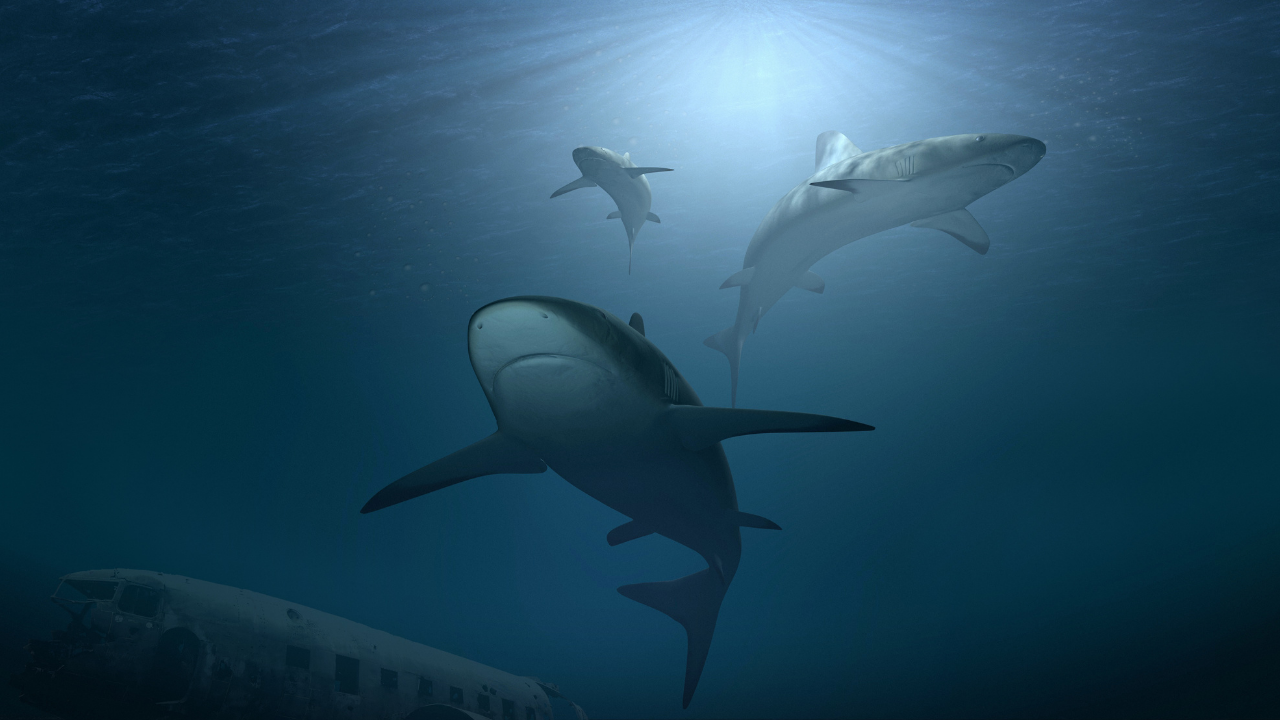
![]() Written by Yuliia Kliusa
Written by Yuliia Kliusa
04/11/2021 12:47:31 en Marine life
|
0 comments
When hearing the word shark, we are presented with a very specific image in the mind. We have all seen images on television. Many of us have seen their corpses out of the water and a lucky few have seen them alive. in their own habitat. But despite having a clear representative image. the shark is still a completely unknown animal to most of us.
The first thing we should know is that sharks are part of the group of "elasmobranchs" (sharks, tope sharks and rays) or "cartilaginous fish". These differ from bony fish for several reasons:
Obviously. Because your skeleton is not made up of bones but cartilage. Like sharks they don't have ribs. They have powerful muscles strongly attached to the skin. These. next to the fusiform shape of its body. they give them the characteristic strength that allows them to reach such high speeds in their displacements.
Secondly. because their gills form openings and not gills. Through them passes the water that carries oxygen and. for this reason. sharks have to be in continuous motion. to ensure that water does not stop circulating through their gills and thus avoid dying of suffocation. However. Scientists are still studying the possible causes that allow some species of sharks to enter a state of torpor or "sleep."
In addition. because its body is covered with dermal denticles and not with scales. By gently stroking its fur from head to tail, you can feel the tiny, rough teeth that cover it. This thick skin protects them from the frigid atmosphere of the depths. However. although sharks are generally ectothermic (cold-blooded) animals. the five species of the family Lamnidae have the incredible ability to adapt their body temperature to the outside. retaining the heat produced by their muscles and thus raising their temperature up to 25 degrees more.
Finally. Because they do not have a swim bladder. Sharks control their buoyancy thanks to their liver, which is full of low-density oil, and the lightness of their cartilaginous skeleton. Some species of shark. such as the Bull Shark (Carcharias Taurus). they can even swallow air into their stomach to regulate their buoyancy.
You also have to know how to distinguish a male from a female. It couldn't be easier. The males have two prominent organs called claspers. which are an appendage of the pelvic fins and are located on the inside. Insemination is produced by inserting a clasper inside the female's orifice that has the unfortunate name of "cloaca". During copulation, the male bites a pectoral fin of the female to cling to it and maintain the same orientation of the clasper inside the cloaca. This is usually a fairly aggressive act after which the female is left exhausted and full of wounds all over her body.
Shark gestation lasts an average of 12 months. although in some species it lasts up to 22 months. Fortunately. sharks are born fully developed. being at his birth. adult miniature sharks. Shark reproduction is distinguished into three types of development:
Oviparous: the female. after fertilization. gives birth to eggs wrapped in a shell that hardens on contact with water and whose shape and color allows it to hide under cover of predators. in the sand or among the seaweed. holding onto tendrils.
Ovoviviparous: Eggs incubate and hatch in the female's abdomen. nourishing themselves inside until they are autonomous. During this time. the embryos of some species suffer intrauterine cannibalism (the weakest will be eaten by their brothers before being born).
Viviparous: this is undoubtedly the most developed method of reproduction. Fetuses remain directly connected to the maternal body until the moment of birth. as it happens in the vast majority of the most evolved animals (among which is man).
to finish. One last curiosity about the shark is that it has several teeth throughout its life. Embedded in the gum (and not attached to the jaw) the first visible row of teeth is behind another 4 or 5 rows of teeth ready to replace them when necessary. So. when a shark loses a tooth approximately every two weeks for juveniles and every two months for adults. a substitute tooth is moved to its new position.
Comments
This website uses cookies to offer a better service and provide tailored advertisements. By using this website, you agree to such use. Consult our Cookies policy.
Accept